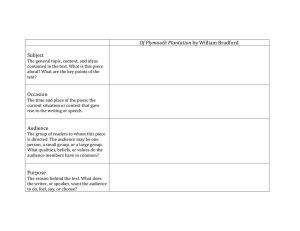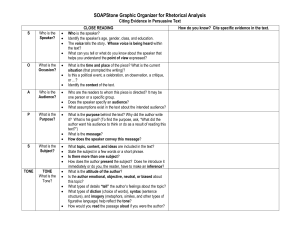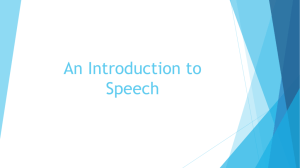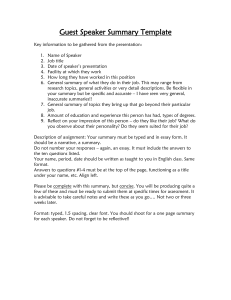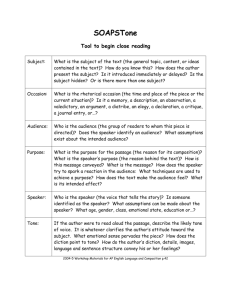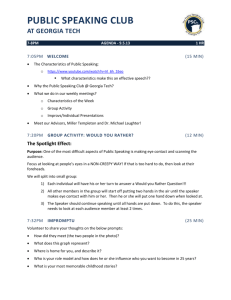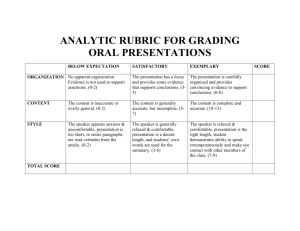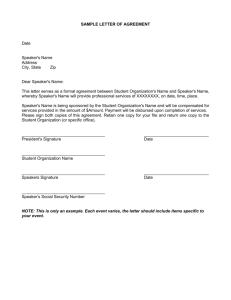Annotating Texts: Strategies for Understanding Non-Fiction
advertisement
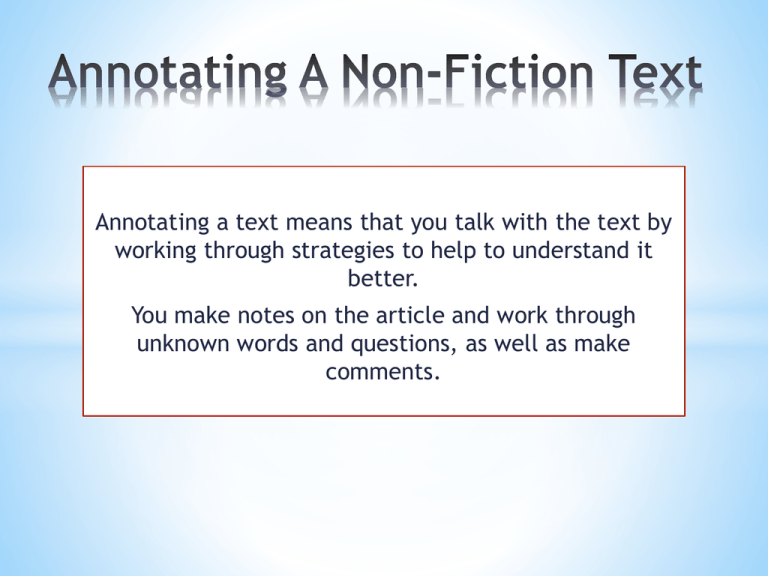
Annotating a text means that you talk with the text by working through strategies to help to understand it better. You make notes on the article and work through unknown words and questions, as well as make comments. * * Circle unfamiliar words (then define them) * Acknowledge the confusion * Talk with text * Comments * Predictions * Observations * Connections * Reactions * Capture the main idea * Highlight important details * Purpose: What is the author’s argument/claim? What is the focus? Is the author writing to entertain you? Inform you of about something? Persuade you to action? Convince you to feel to think or feel a certain way? Does he/she wish to contrast ideas? Be specific, and point to concrete examples (use evidence/quotes from the text). Audience: Explain the author’s projected audience. Are they friendly or hostile? Are they associated with a particular interest group? Of a particular age? Gender? Social class? Support your choices with examples and/or explanations. Speaker: Describe who is speaking in the text. For informational texts, the speaker is usually the author. For nonfiction, the speaker is a character. Who is the speaker here? What do you know about him/her? Use textual evidence/quotes to support your claim. Tone: What words does the author use to show the speaker’s attitude? What tone does the author take towards the subject? Toward the audience? How does the author deliver the message? Organization: What organization method does the author use, and how does this organization enhance the development of the author’s claim? Rhetoric: How does the author construct his/her sentences? How can you classify the author’s word choice? How do these elements affect the author’s claim? Imagery: What are the primary images in the text? What about figurative language (metaphors, similes, repetition, allusion, alliteration, personification, vivid descriptions)? What ideas do they tend to represent? How do these images enhance the author’s purpose and claim? * FATT sentence (Focus, Author, Title, text type) In the ____________________, “__________________________” by (text type) (Title) _____________________________, he/she ______________________ (Author) (Focus) ____________________________________________________________. **Strong verbs: expresses, discusses, states, disputes, persuades, suggests, advocates, challenges, focuses, supports, presents, emphasizes, provides, argues, claims, attacks, reflects, comments, describes, distinguishes, reveals, implies, refers, displays

